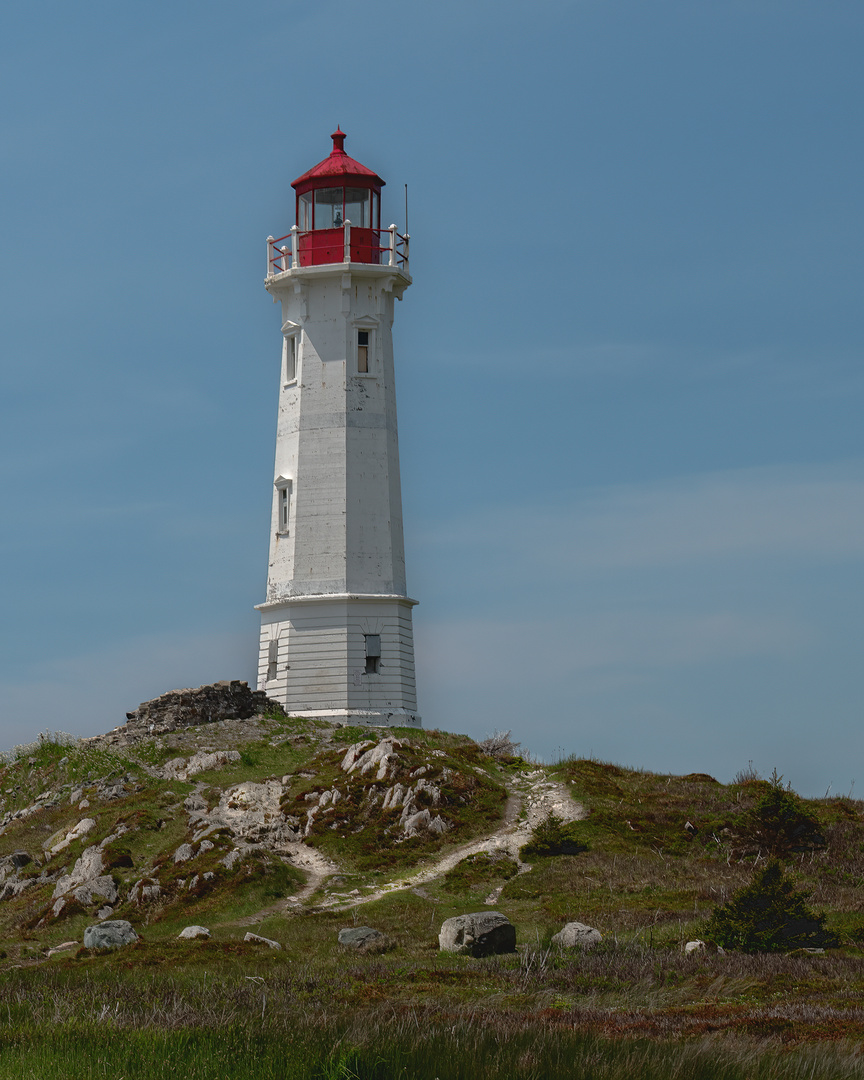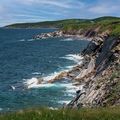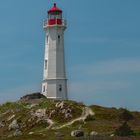Louisbourg Lighthouse
The Louisbourg lighthouse constructed by the French at Louisbourg was the first established in Canada, and the second on the North American continent. (The first North American light was lit on September 14, 1716 on Little Brewster Island in Boston Harbour.) Louisbourg, built near the northeast corner of Cape Breton Island, was the base from which the French planned to hold New France against the English. The Fortress was dependant upon ships from France to supply most of its needs. Safe entrance to the harbour at the end of the long voyage became a concern.
The initial plan to build a tower and light was made in late 1727, though the formal decision to build was not made until spring of 1729, after one of the King's ships, Le Profond nearly met its end in the harbour which was marked only by a navigational cross, and periodically by a bonfire.
Construction began in August of 1731. The c. 70 foot circular tower made of coursed rubble was completed two years later. The first lighting of the sperm oil lantern was not made until the first of April, 1734. This was due to a delay in the arrival of some 400 small lantern panes from France - the first ones sent were the wrong size and new ones could not be shipped until the next spring. The actual light was a circle of cod-liver oil fed wicks set in a copper ring mounted on cork floats. This light was said to be visible for 18 nautical miles, an impressive distance for those times. A small duty was levied on vessels using Louisbourg Harbour to cover the expense of construction and upkeep - including the lightkeepers salary. This was a profitable light, since the duty covered the cost of building it, and more.
https://tinyurl.com/3shnkdjb















Vitória Castelo Santos 12/07/2023 17:08
Starkes Foto, gefällt mir sehr gut.LG Vitoria